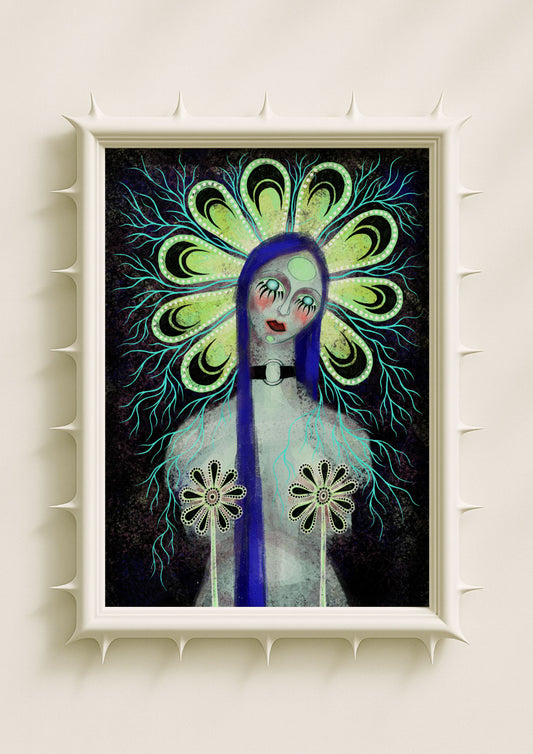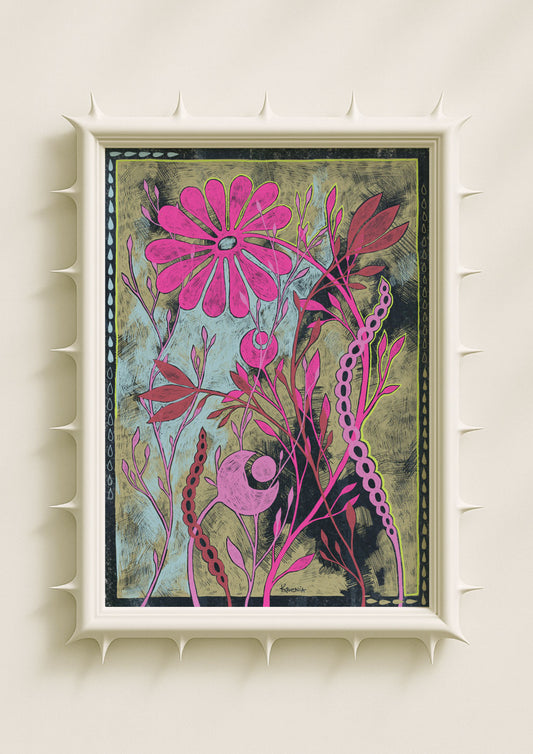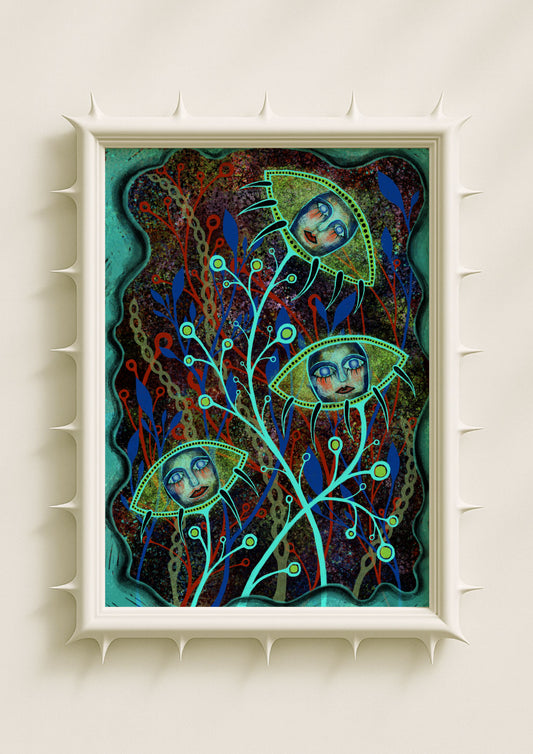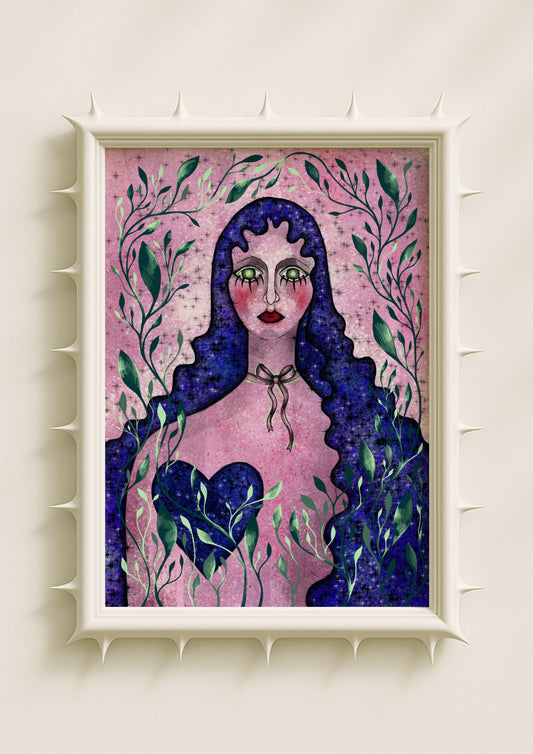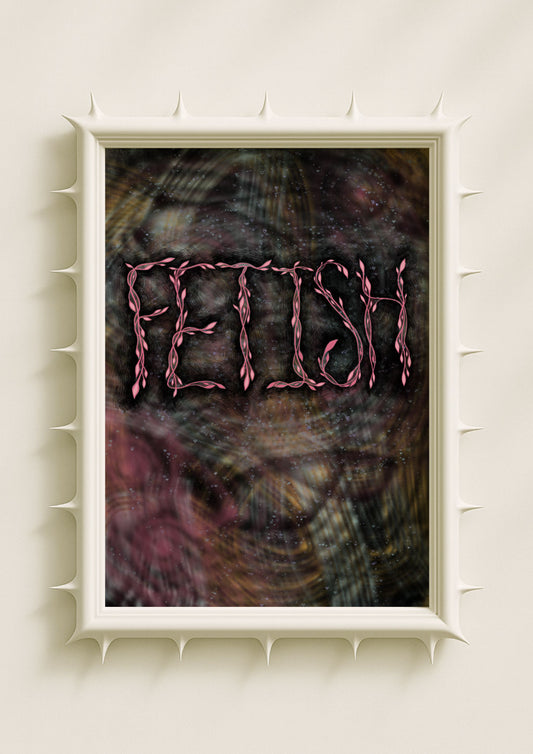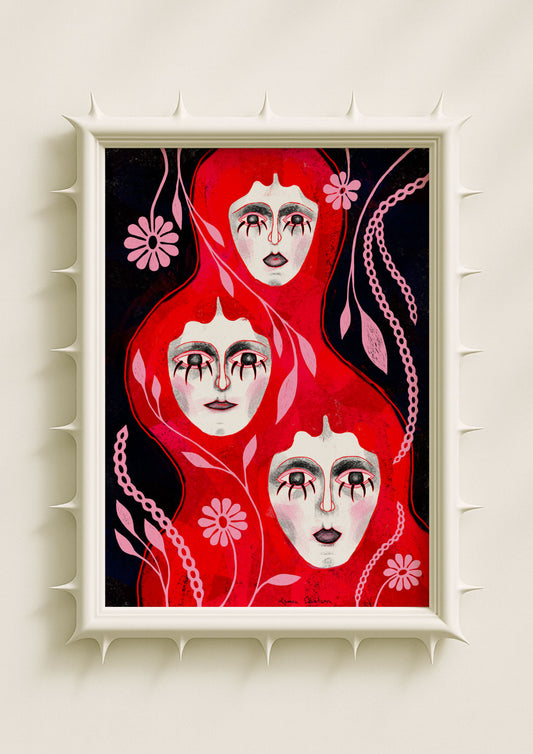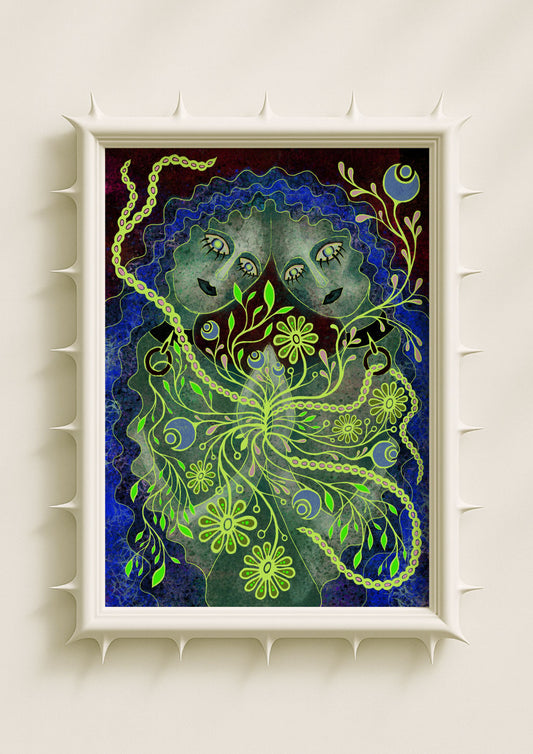When Weirdness Lives in the Surface, Not the Shock
In my weirdcore-inspired artworks, unsettling emotion doesn’t come from dramatic distortions or violent imagery. It comes from the surface — from textures that feel alive, touched, and slightly wrong in a way that’s difficult to name. Grain, noise, dust, micro-scratches, uneven patches of colour, and barely visible marks create a quiet strangeness that pulls the viewer closer. The weirdness is atmospheric, not aggressive. It whispers instead of screams, creating tension through subtle friction.

Grain as Emotional Static
Grain is one of the most important elements in my weirdcore pieces. It behaves like emotional noise — a soft static that fills the image with a sense of buzzing uncertainty. Fine granularity prevents the surface from ever feeling clean or flat. It introduces vibration, suggesting that the scene is shifting slightly, even when everything looks still. This “visual static” produces a mood similar to half-remembered dreams: cloudy, unstable, faintly unsettling, and softly alive.
Micro-Details That Feel Like Hidden Signals
I often embed micro-details in the background: faint specks, delicate cracks, tiny dots, or whispered patterns that aren’t immediately noticeable. These details behave like invisible codes or secret messages inside the image. They activate curiosity and create a sense that there is something beneath the surface — something unsaid, unresolved, or gently haunting. Weirdcore thrives on this feeling of depth that cannot be fully understood. These tiny marks become emotional triggers, prompting the viewer to look longer, search further, and feel more.

Rough Texture as Soft Discomfort
The roughness in my surfaces is never sharp or violent. It’s tactile, dusty, almost vintage in its imperfection. This kind of roughness creates soft discomfort — a mood rather than a shock. It feels familiar yet off, like an old photograph developing incorrectly or a dream that refuses to fully resolve. This texture breaks the illusion of digital clarity. It reintroduces humanity: touch, wear, and the sense that someone has physically interacted with the image.
The Power of Textures That Behave Like Memory
Weirdcore is deeply connected to nostalgia, forgotten places, and dreamlike fragments of experience. My textures often echo these themes. Stained patches resemble old walls or aged paper. Cracks feel like fractures in memory. Grain looks like the static from analog screens or retro cameras. These textures give the image a temporal quality, as if it has lived a life before arriving in front of the viewer. The weirdness is emotional, tied to memory rather than distortion.

Whispered Atmosphere Instead of Loud Distortion
What makes weirdcore powerful is not chaos but subtlety. The textures in my posters create an atmosphere where reality feels slightly shifted — familiar enough to recognise but different enough to unsettle. Instead of forcing discomfort, the textures invite it. They suggest something ethereal, fragile, or quietly uncanny. The viewer steps into a mood rather than a scene, guided by the way the surface breathes, flickers, and murmurs.
Why Whispering Textures Matter
By letting textures carry the emotional weight, the image becomes immersive. Characters, flowers, creatures, and abstract shapes inhabit a world that is already pulsing with atmosphere. The surface itself becomes a storyteller.
In weirdcore, the most powerful emotions are the quiet ones. And through grain, micro-marks, stains, and rough surfaces, my artwork speaks softly — letting the strangeness unfold slowly, intimately, and with the delicate persistence of a whisper.
